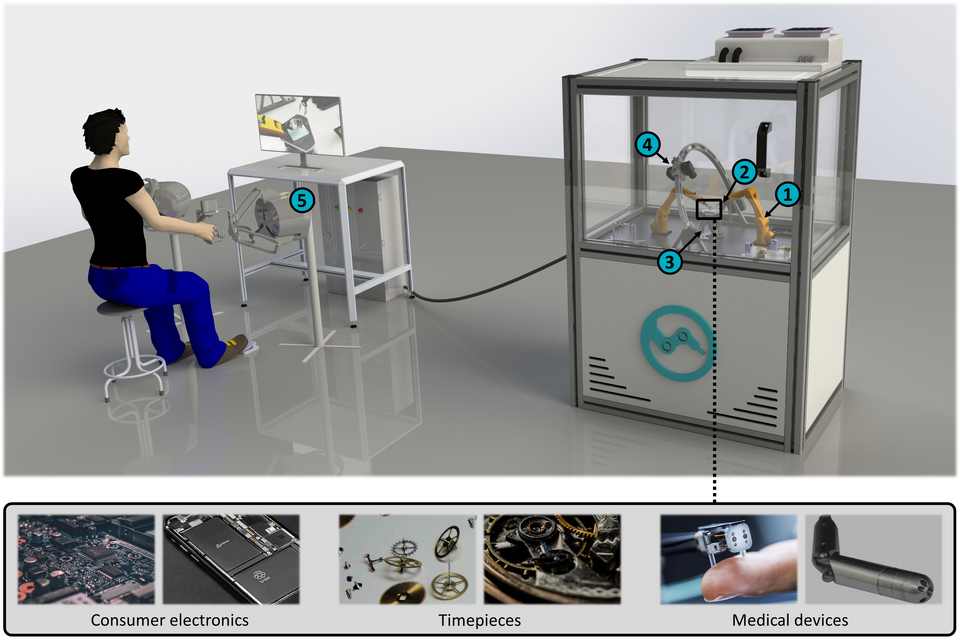Robot-Assisted Micro-Assembly of Miniature Prototypes
For the last decades, miniaturization has been observed to be one of the main driving forces behind new developments in various sectors of industry such as consumer electronics, medical technology, or even watchmaking. When considering miniaturized devices, two key challenges arise from an engineering point of view: The manufacturing of miniature mechanical and electronic components, and the assembly thereof. While nowadays a solid range of micro-manufacturing techniques are already well established, micro-assembly remains rather traditional in general. Particularly during the prototyping phases, novel micro-devices are mostly assembled manually directly by their creators – typically scientists and engineers, untrained in micro-assembly. This approach is prone to bear long assembly times, low-quality results, and potentially even component damage or destruction.
We are developing a robotic solution addressing these issues and tailored to the needs of prototype designers by combining a high-precision assembly system with an intuitive user interface. The focus lies on micro-devices featuring characteristic lengths between 100µm and 10mm, intricate, convoluted geometries, and both mechanical and electronic components. The main challenge hereby is to meet the high demands on precision and versatility of the assembly system, all while maintaining a strong level of intuitiveness and transparency of the user interface. The proposed solution will enable designers to assemble their prototypes themselves in a faster, easier, and safer way, accelerating research and engineering processes, and eventually allowing for more complex and space-efficient micro-devices to be created.
Project leader: Cédric Duverney

System concept: A robot arm (1) fitted with a micro-gripper (2) is used to manipulate and assemble the micro-parts on an actuated worktop (3). The user is provided with a magnified view thereof from all sides through a movable camera system (4), and with intuitive control of the manipulation process through a haptic interface (5).
Open
Completed
- Internship: Structural analysis of a miniature parallel robot for precise milling in surgery
- Master Thesis: Augmenting a custom haptic input device handle with force feedback for intuitive grasping
- Master Thesis: Manipulating the micro-world - design and fabrication of a small-scale force-sensitive gripping device
- Bachelor Thesis: Real-time visual feature recognition and metrology for mechanical micro-Parts
- Semester Project: Conception, implementation, and evaluation of a virtual simulation environment for a teleoperation user console
- Master Thesis: Switching tools on the fly - design and fabrication of a small-scale tool changing system for a miniature robot arm
- Master Thesis: Development and evaluation of a virtual simulation environment for a visuo-haptic user console (PDF, 957.18 KB)
- Master Thesis: Development and evaluation of a visual feature recognition framework for a robotic assembly system
- Semester Project: Testing usability of surgeon input mappings with an externally tracked VR headset to display an endoscopic camera image (PDF, 2.39 MB)



